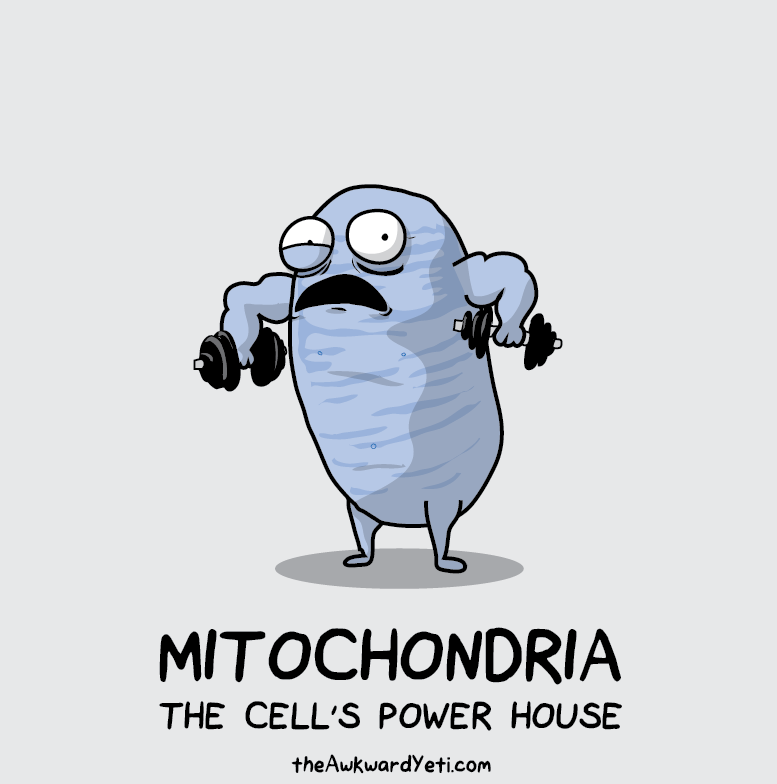Mitochondrial function
Posted on May 15, 2019 at 4:00 PM

Mitochondria are little power generators in cells. They make energy (in the form of ATP) by burning down food combined with the help of inhaled oxygen. Our bodies need this energy to function effectively. On average, we produce our own body weight in ATP each day. Without ATP, we’d have no heartbeat, our muscles wouldn’t contract, we wouldn’t be able to see, our wounds wouldn’t properly heal, we’d be unable to keep our body at the normal temperature of 98.6 °F, and we’d be unable to chew, digest, or absorb nutrients. In short, when our ATP falls below a certain level, we die. Not surprisingly, cells that require the most energy - such as the brain, heart, skeletal muscles and the eye - contain the most mitochondria. Scientists now know that Mitochondria are not only energy producers, but are sophisticated assessors and communicators. They protect the nucleus of the cell by taking early damage, dying off, and whatever else it may take to save the cell. You owe your life to Mitochondria and you inherited this from your mother.

For the Scientist: Mitochondria are known as the “power houses of cells” because they supply the required energy in the form of ATP and heat that is essential for carrying out all essential cellular processes and provide energy to vital organs of the body, including the brain, heart, and muscles. This cellular energy is produced by oxidative phosphorylation (OXPHOS), which is carried out in mitochondria through the coordinated actions of three vital mitochondrial components, including: The electron transport system (ETS; complexes I-IV) ATP synthase (complex V) Adenine nucleotide translocase
The potential energy produced and stored in mitochondria is utilized to carry out various functions, including the following: It provides about 90% of the cellular energy by serving as the motive force that drives ATP synthase and condenses ADP and phosphate to produce ATP It produces reactive oxygen species (ROS) It regulates the redox state of the cell It is utilized in the transport of substrates and proteins into and out of mitochondria It maintains the homeostasis of Ca+2 in the body It is involved in the anabolism and catabolism of high-energy biochemical compounds that are part of vital enzymatic reactions and processes in the cell It regulates apoptosis by activation of the mitochondrial permeability transition pore
Cells cannot even make the RNA and DNA that they need to grow and function without mitochondria. The building blocks of RNA and DNA are purines and pyrimidines. Mitochondria contain the rate-limiting enzymes for the biosynthesis of pyrimidines (dihydroorotate dehydrogenase), which are used to make DNA and RNA, and heme (d-amino levulinic acid synthetase), which is required to make hemoglobin.
In the liver, mitochondria are specialized to detoxify ammonia in the urea cycle. Mitochondria are also required for cholesterol metabolism, sperm motility, egg fertilization, estrogen and testosterone synthesis, and neurotransmitter metabolism, as well as for free radical production and detoxification.
Image References:
Other Mitochondria Links:
- Mitochondria: Reactive oxygen species
- Mitochondria and Immune
- Mitochondria and Aging
- Mitochondrial Bioenergetics
- Mitochondrial involvement in cell death
- Mitochondrial fission/fusion
- Mitochondrial Function
- Mitochondria: Heat
- Mitochondrial Heteroplasmy
- History of Mitochondria
- Mitochondrial vs. Nuclear DNA
- Mitochondrial Oxidative Phosphorylation
- Mitochondrial death: mitophagy
- Mitochondrial diseases
- Mitochondrial Requirements
- Mitochondrial and Toxins